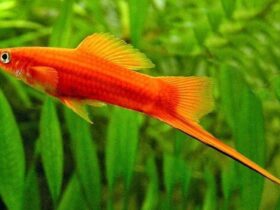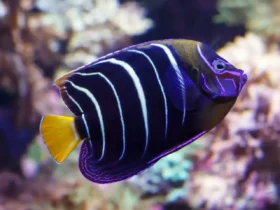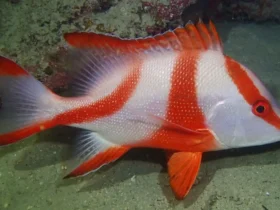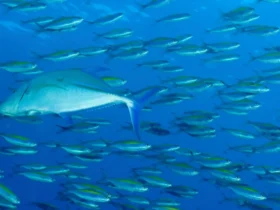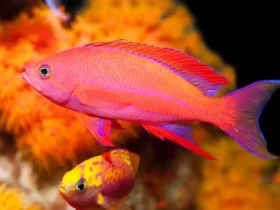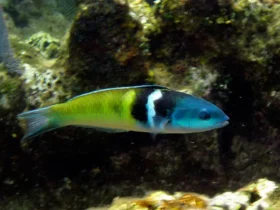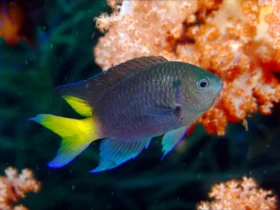In the mysterious depths of the ocean, an enchanting creature with a slender and ribbon-like body moves with elegance—the Ribbon Eel (Rhinomuraena quaesita). With its distinctive shape and mesmerizing colors, this remarkable eel captures the fascination of divers and marine enthusiasts. Join us as we explore the captivating world of the Ribbon Eel, uncovering its appearance, behavior, habitat, and the intriguing qualities that make it a true marvel of the ocean.
Ribbon Eel images
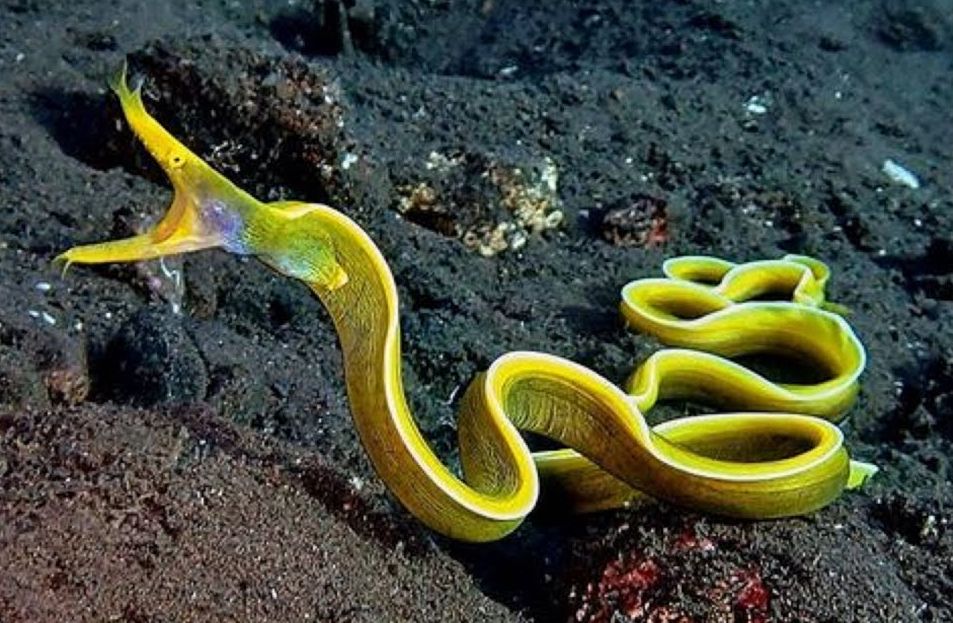
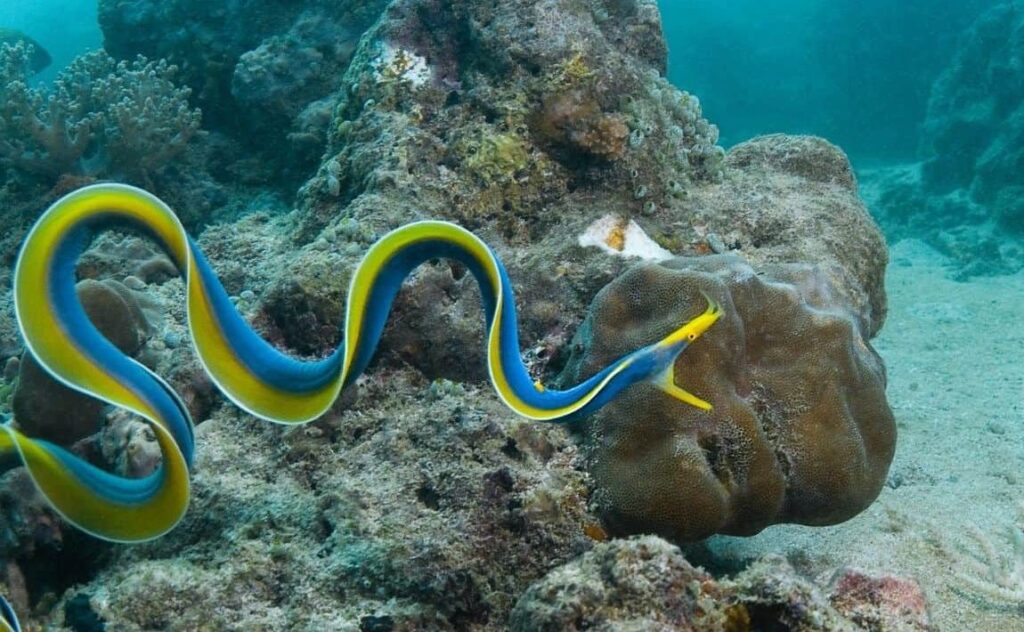
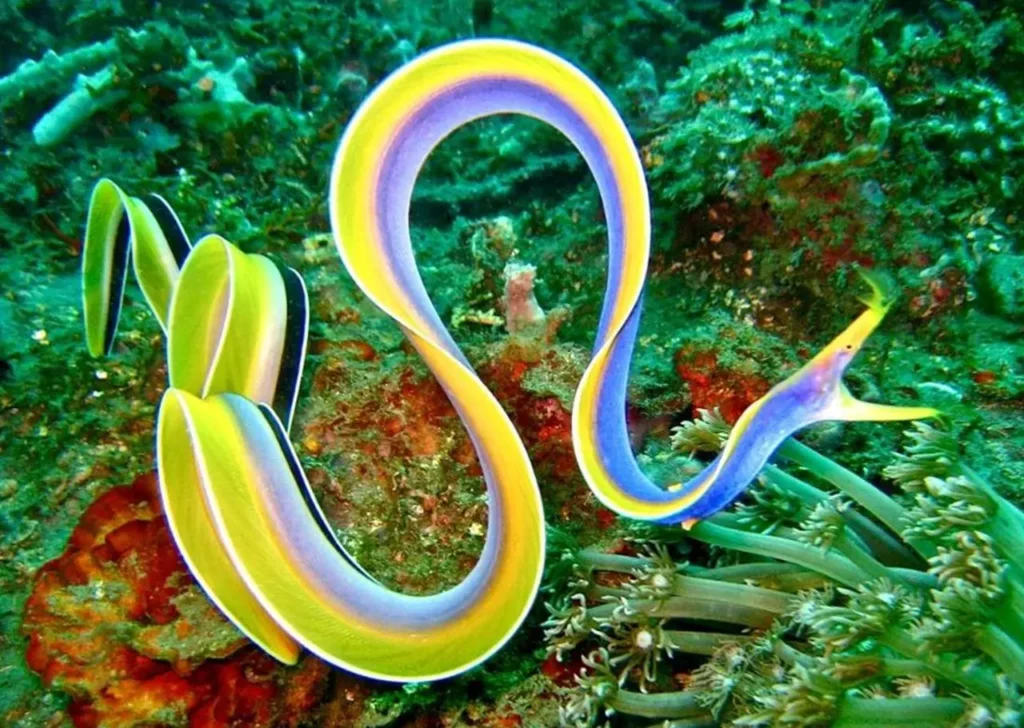
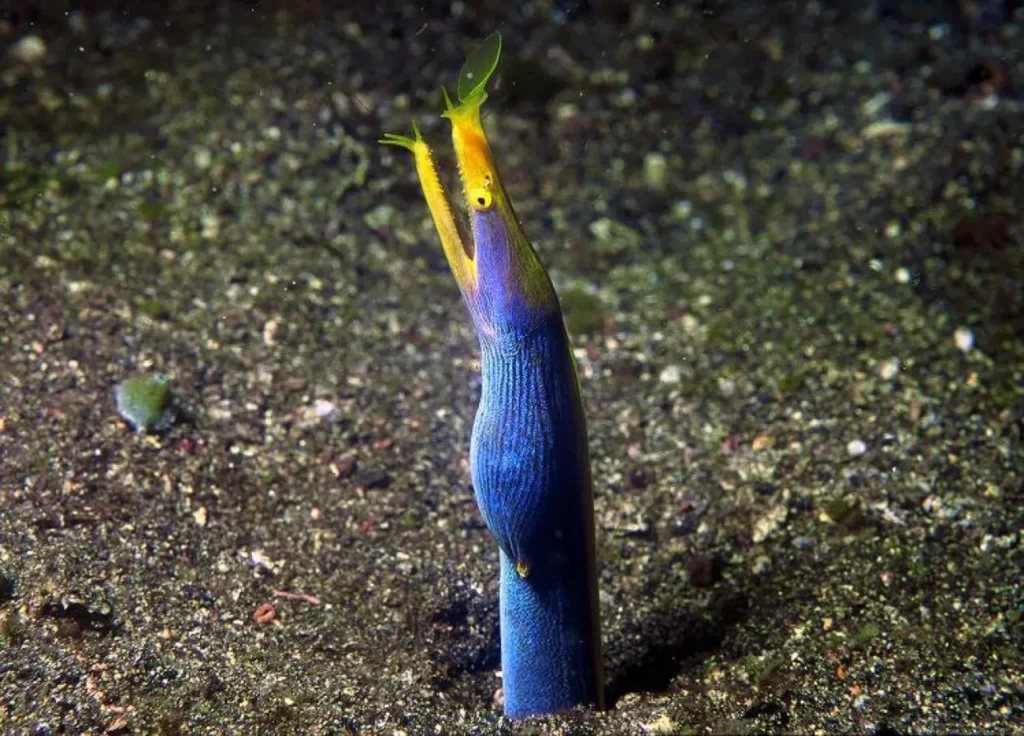
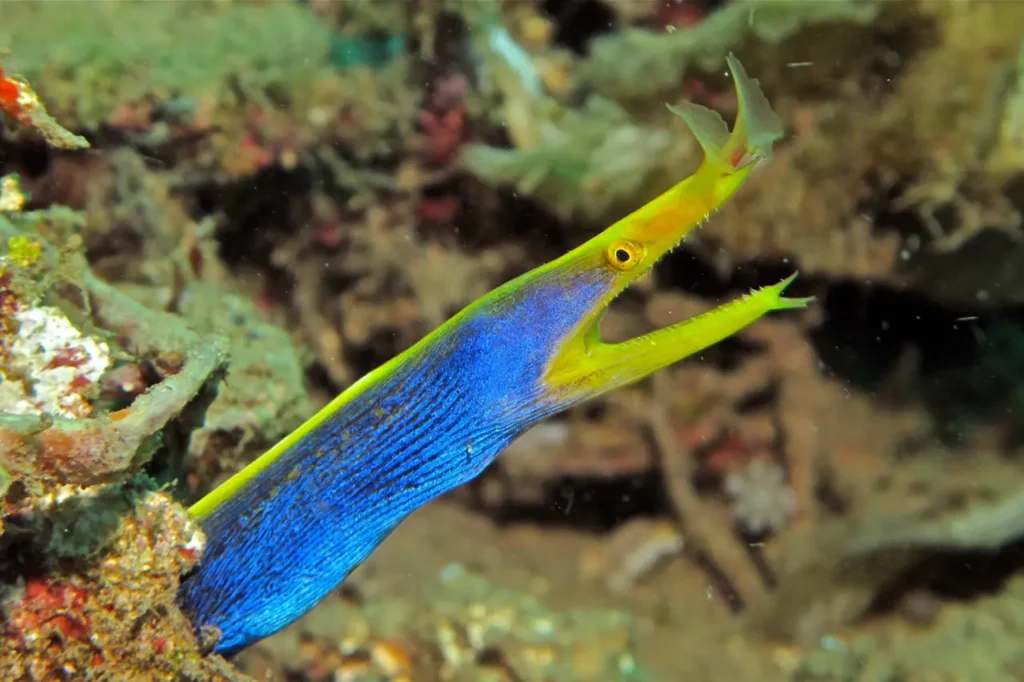
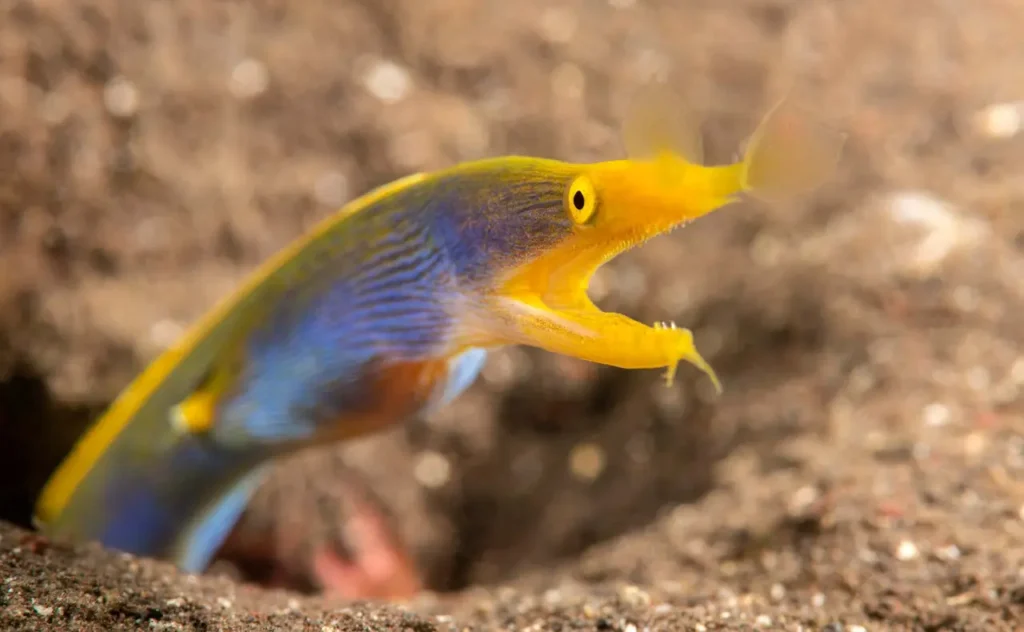
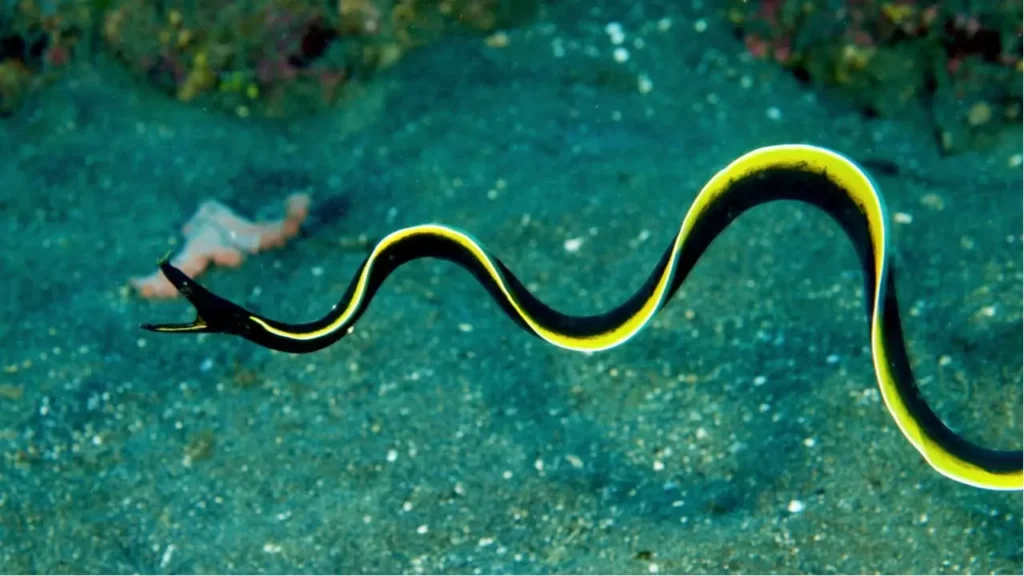
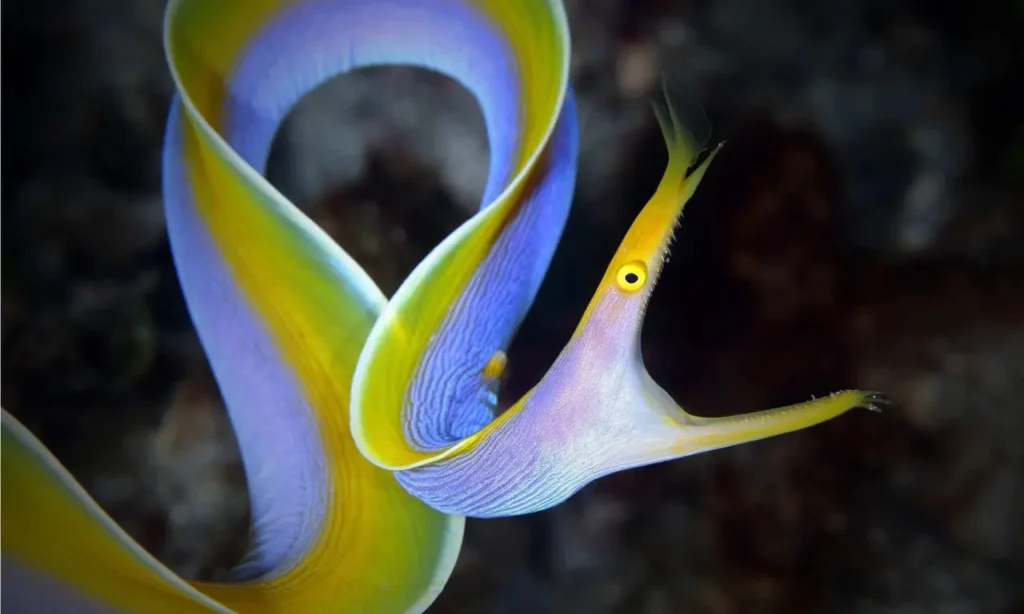
Appearance and Coloration
The Ribbon Eel possesses a unique and striking appearance. It has a long, snake-like body that can grow up to one meter in length, with males typically being larger than females. The most distinctive feature of the Ribbon Eel is its elongated and ribbon-like dorsal fin, which extends from its head down the length of its body. Juveniles have a jet-black coloration throughout their bodies, while adults undergo a remarkable transformation. Males turn into a striking blue color with a yellow face, while females adopt a yellow coloration with a black-edged dorsal fin.
Behavior and Habitat
Ribbon Eels are primarily found in tropical and subtropical waters of the Indo-Pacific region, including coral reefs and sandy habitats. They prefer areas with ample hiding spots, such as crevices and burrows, where they can seek shelter and protection. Ribbon Eels are solitary creatures, typically seen partially buried in the sand or partially hidden within coral formations. They are carnivorous, preying on small fish and crustaceans, using their specialized jaws to snatch their prey with lightning speed.
Life Cycle and Transformation
The Ribbon Eel undergoes an intriguing transformation throughout its life cycle. Juveniles start as males and then transition into females as they grow older. This phenomenon, known as sequential hermaphroditism, is quite rare in the animal kingdom. During the transition, the males turn from the vibrant blue coloration into a duller black, while females develop their distinct yellow hue.
Conservation and Threats
The Ribbon Eel is not currently listed as an endangered species. However, it faces potential threats due to habitat degradation, overfishing, and coral reef destruction caused by human activities. Climate change, including rising sea temperatures and ocean acidification, also poses challenges to the health and survival of coral reef ecosystems, which the Ribbon Eel depends on for its existence. Conservation efforts focused on protecting coral reefs, implementing sustainable fishing practices, and raising awareness about the importance of marine conservation are crucial for the long-term preservation of the Ribbon Eel and its habitat.
Appreciating Nature’s Beauty
The Ribbon Eel’s unique appearance and graceful movements make it a captivating sight for divers and underwater photographers. Observing its elongated body gracefully swaying in the water and witnessing its striking color transformations is a true testament to the wonders of the ocean’s biodiversity. The Ribbon Eel serves as a reminder of the extraordinary and often unseen marvels that exist beneath the surface.
The Ribbon Eel, with its ribbon-like body and mesmerizing colors, represents the awe-inspiring diversity of marine life. Its presence in coral reefs and sandy habitats adds to the intricate beauty and delicate balance of these ecosystems. By supporting conservation efforts, promoting sustainable practices, and raising awareness about the importance of protecting marine habitats, we can ensure that the Ribbon Eel continues to grace our oceans, enchanting us with its grace and reminding us of the precious treasures that lie beneath the waves.
